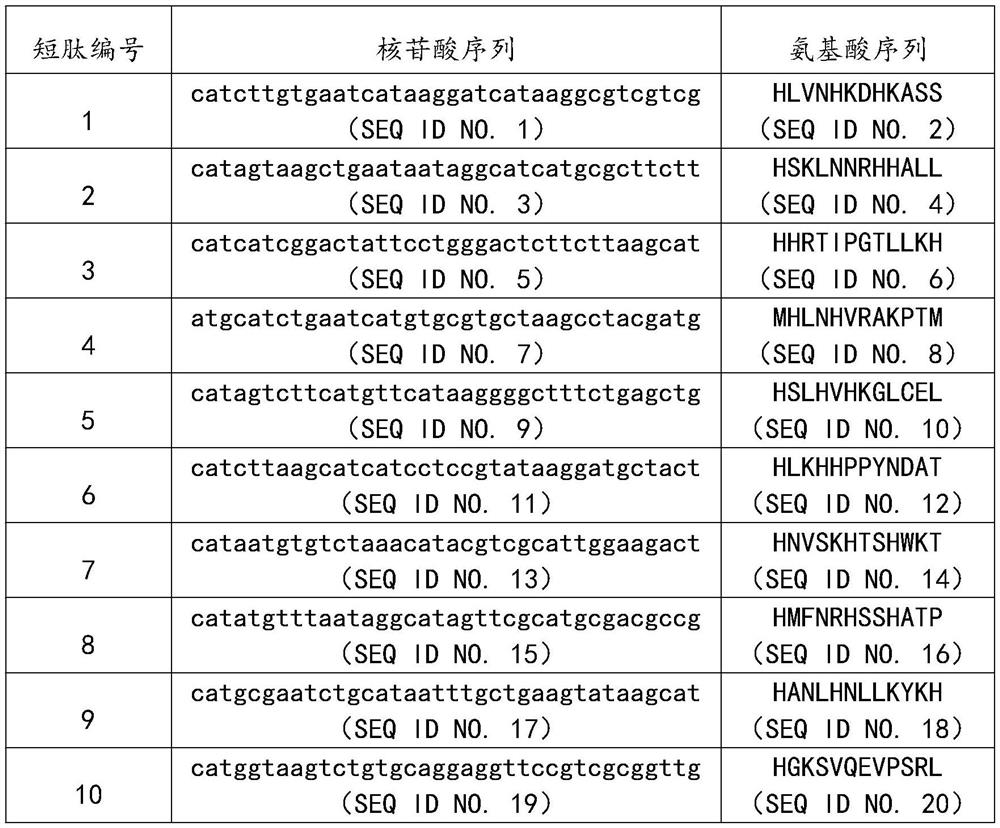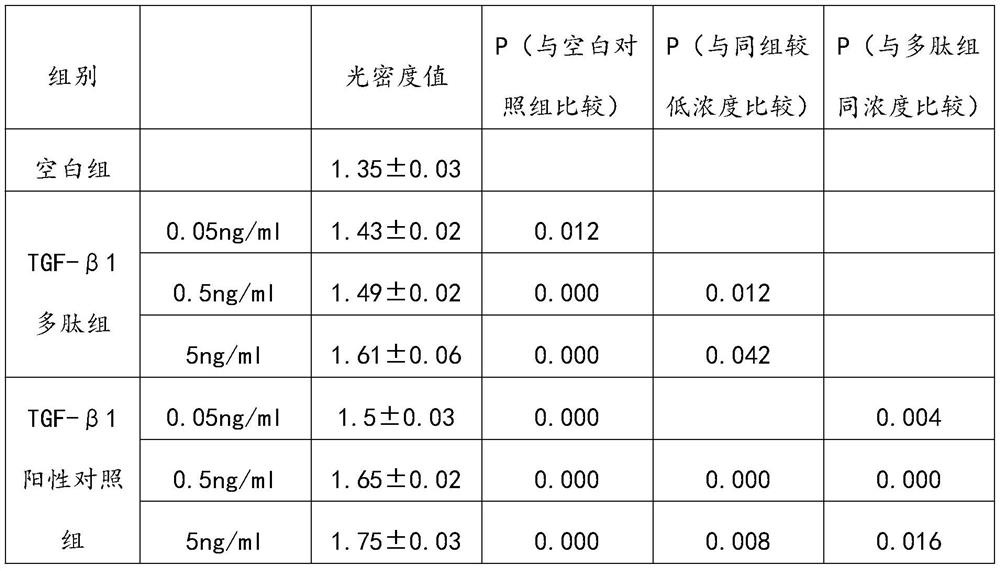Transforming growth factor beta1 active polypeptide and application thereof
A transforming growth factor and active polypeptide technology, applied in the direction of transforming growth factor, growth factor/inducing factor, specific peptide, etc., can solve the problem that there is no transforming growth factor β1 active polypeptide gel, etc., to promote wound healing, improve Healing efficiency and effectiveness, inflammation-reducing effect
- Summary
- Abstract
- Description
- Claims
- Application Information
AI Technical Summary
Problems solved by technology
Method used
Image
Examples
Embodiment 1
[0031] Embodiment 1: Screening of TGF-β1 active polypeptide sequence
[0032] Coat the 96-well plate with human TGF-β1 monoclonal antibody, add phage random dodecapeptide library (purchased from NEB Company, USA) and incubate overnight at 4°C, wash the plate 10 times with TBST, and wash the plate with elution buffer (0.2mol / L Glycine-HCl, pH 2.2, 0.1% BSA) to elute the bound phages, neutralization buffer (1mol / L Tris-HCl, pH 9.1) quickly neutralizes the eluate.
[0033] E.coli ER2738 host bacteria were used to amplify the eluate for the next round of screening. In the same way, three rounds of screening were performed on the eluate from each round. Titer determination was carried out on the eluate of the fourth round, phage coeruleus was randomly selected, amplified, and adjusted to 2.0×10 13 pfu / mL.
[0034] The ELISA method and the human TGF-β1 immunoassay kit (purchased from R&D Company, USA) were used to detect the binding ability of the monoclonal phage according to th...
Embodiment 2
[0044] Embodiment 2: Synthesis of TGF-β1 active polypeptide
[0045] The seven TGF-β1 polypeptide sequences screened in Example 1 were sent to Wuhan Minghao Biotechnology Co., Ltd. for the synthesis of TGF-β1 active polypeptides, purified to a purity of 98%, and then disulfide bonds were used to stabilize the peptides. Chain structure, at the same time, the C-terminus of the polypeptide is amidated and blocked to enhance the stability of the active polypeptide; the N-terminus of the polypeptide is labeled with a rhodamine laser dye to identify the affinity of the active polypeptide with fibroblasts, and to detect whether it can Associated with fibroblasts. Prepared into freeze-dried powder and stored at -20°C.
Embodiment 3
[0046] Embodiment 3: In vivo and in vitro experiments of TGF-β1 active polypeptide
[0047] The TGF-β1 active polypeptides in Example 2 are intervened in the cultured fibroblasts, because the TGF-β1 active polypeptides are labeled with rhodamine laser dye, so immunofluorescence detection can be used to detect their affinity with fibroblasts . The results show that only the TGF-β1 active polypeptide shown in SEQ ID NO.23 can bind to the specific receptor on fibroblasts.
[0048] Further, the TGF-β1 active polypeptide shown in SEQ ID NO.23 was co-cultured with human fibroblasts for in vitro experiments, and a blank control group, a TGF-β1 active polypeptide group and a TGF-β1 growth factor group were set. Using the CCK-8 method, it was found that compared with the negative control group, the TGF-β1 active polypeptide group could promote cell proliferation, and there was a significant difference (P<0.05), and it was dose-dependent. See Table 3 for details.
[0049] Table 3 CCK-...
PUM
 Login to View More
Login to View More Abstract
Description
Claims
Application Information
 Login to View More
Login to View More - R&D
- Intellectual Property
- Life Sciences
- Materials
- Tech Scout
- Unparalleled Data Quality
- Higher Quality Content
- 60% Fewer Hallucinations
Browse by: Latest US Patents, China's latest patents, Technical Efficacy Thesaurus, Application Domain, Technology Topic, Popular Technical Reports.
© 2025 PatSnap. All rights reserved.Legal|Privacy policy|Modern Slavery Act Transparency Statement|Sitemap|About US| Contact US: help@patsnap.com


